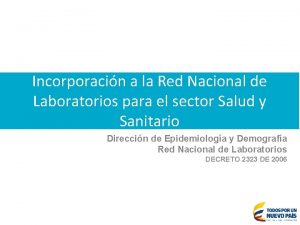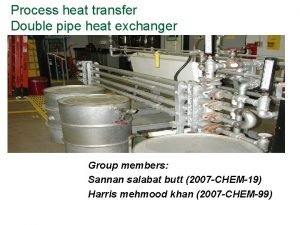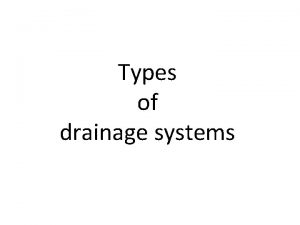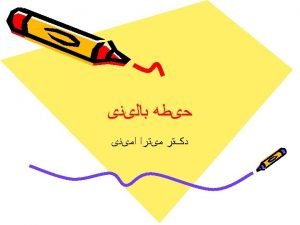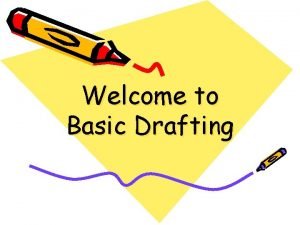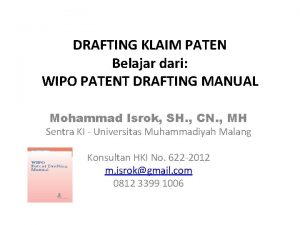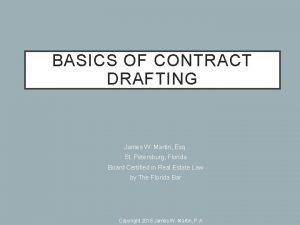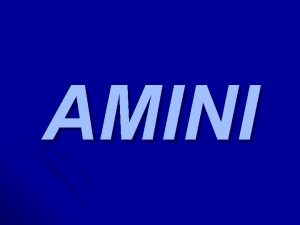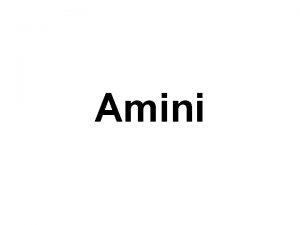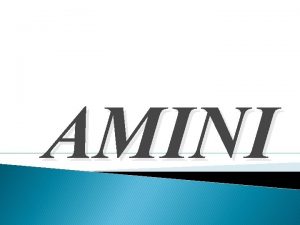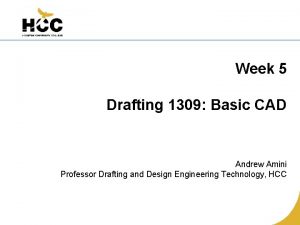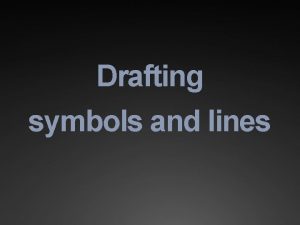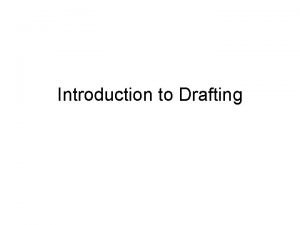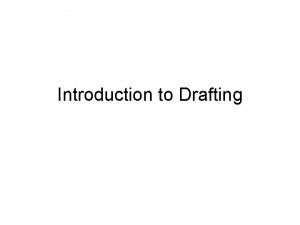Welcome Drafting 2323 Pipe Drafting Andrew Amini Full











- Slides: 11

Welcome! Drafting 2323: Pipe Drafting Andrew Amini Full Time Instructor, HCC

Chapter 7: Flow Diagrams and Instrumentation • Flow diagrams describe, in a schematic drawing format, the sequential flow of liquids, gases, and vapors as they enter, flow through, and exit the process facility. By using simplified drawing symbols, to represent various pieces of mechanical equipment, valving, and instrumentation, and specific notes, callouts, and abbreviations, the flow diagram provides the piping designer with an overall view of the operation of a facility 1

Syllabus • The flow diagram is used by the piping group to develop and lay out the Plot Plan. When developing the Plot Plan, the arrangement of the mechanical equipment in the facility reflects, in part, the logical sequence of flow depicted on the flow diagram. • Process engineers are responsible for developing flow diagrams. In many large engineering firms, an entire department is dedicated to the development of flow diagrams. Today almost all flow diagrams are laid out with CAD drafting software or a 3 D plant modeling software program that has a flow diagram package included. 2

Process Flow Diagram The Process flow diagram is the first flow diagram developed during the design process. The Process flow diagram will include the following: 1. Major mechanical equipment 2. Main piping 3. Direction of commodity flow 4. Operating pressures and temperatures of the facility components 5. Major controlling instrumentation 3

Process Flow Diagrams • Conditions to be used for the design of various pieces of mechanical equipment required for facility operation, that is, fractionation columns, pumps, Heaters. The operating and design conditions (pressures and temperatures) of which a particular piece of mechanical equipment will function. • Design pressure is calculated to be at least 10% above the maximum operating pressure or 25# greater (whichever is largest). The design temperature will be at least the maximum operating temperature, but should be at least 25 degrees above the normal operating temperature. • Composition of the commodities used in the refining or treatment process sequence as they enter and leave the unit. 4

Mechanical Flow Diagrams (P&ID) 1. Pipe line numbers with direction of commodity flow 2. Pipe specifications and line sizes 3. All mechanical equipment 4. All operating and isolating valves 5. All controlling instrumentation with transmitting devices Mechanical flow diagrams define the exact sequence in which all mechanical equipment, valves, instrumentation, connections, etc. are to be made on each process pipe routed through the facility. 5

Flow Diagram Instruments Controlling instruments function by sensing conditional changes in the commodities they monitor, either in pipes or mechanical equipment. Flow (F) Level (L) Pressure (P) Temperature (T) 6

Instrument Types Gauges—instruments that measure the liquid level inside a vessel or the temperature and/or pressure in the piping system. Level, temperature, or pressure gauges can be locally mounted to enable plant operators to obtain a visual reading. Controllers—devices used to maintain a specified liquid level, temperature, pressure, or flow inside a vessel or piping system. Controllers can activate a control valve, which regulates the level, temperature, pressure, or flow of the commodity coming into or out of a vessel. 7

Instrument Types Alarms—instruments that send a signal via lights, horns, or sirens indicate the liquid level, temperature, or pressure inside a vessel is too high or too low or that there is no flow or reverse flow. Indicators—devices used to indicate the liquid level, temperature, pressure, or flow rate inside a piping system. Recorders-—electronic devices used to record the liquid level, temperature, pressure, and flow rate inside a vessel or piping system throughout a certain shift or period of time. 8

Flow Diagram Symbols 9

Valve and Line Symbols 10
